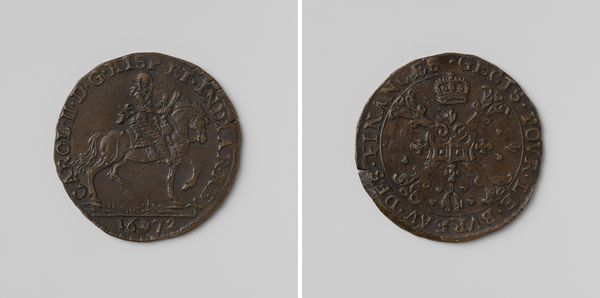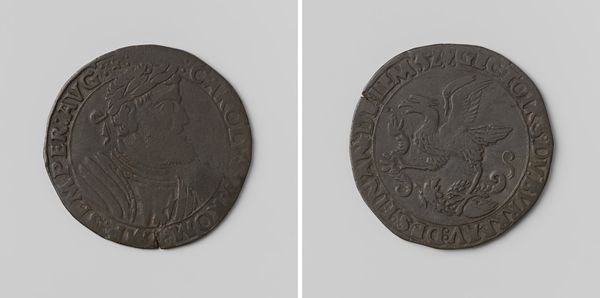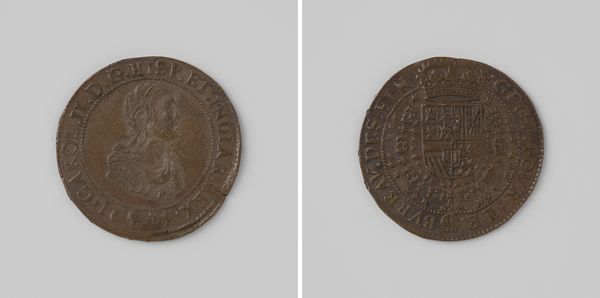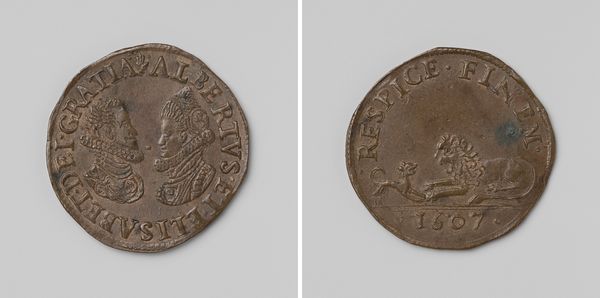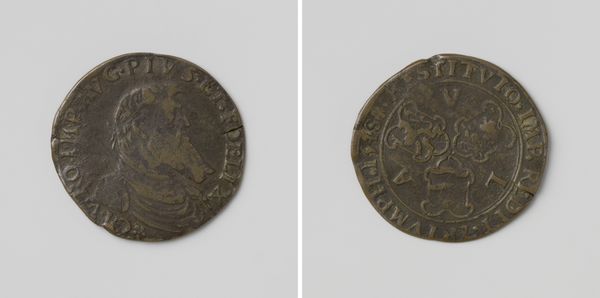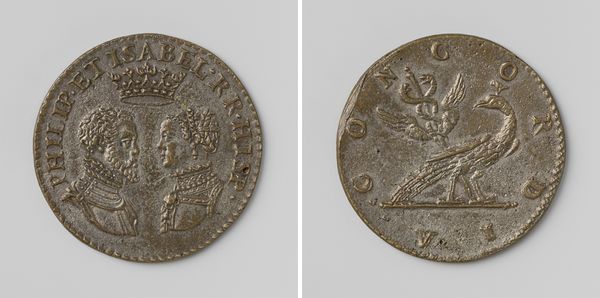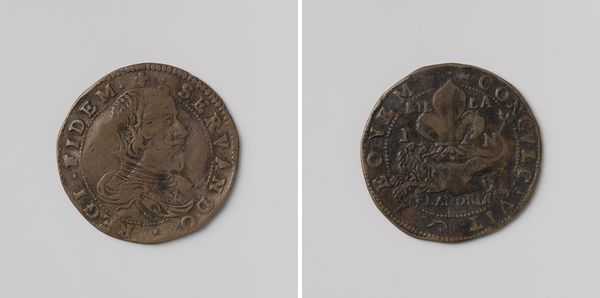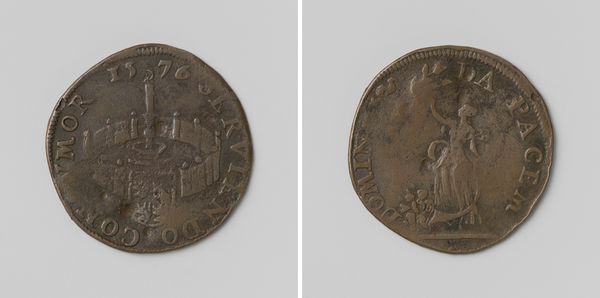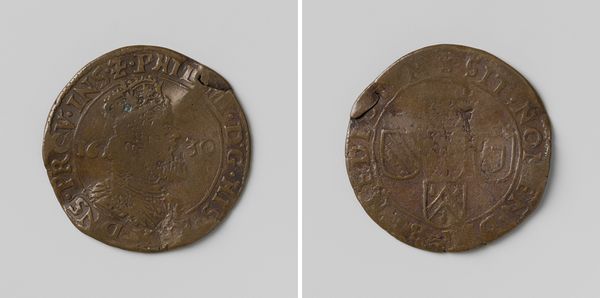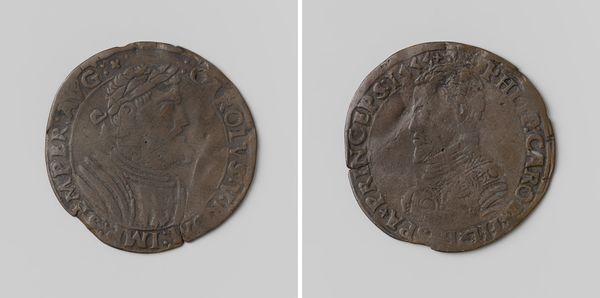
Karel II, koning van Spanje, rekenpenning geslagen op last van de raad van Financiën 1671
0:00
0:00
print, metal
#
portrait
#
decorative element
#
baroque
# print
#
metal
#
history-painting
#
coin
Dimensions: diameter 3.1 cm, weight 6.42 gr
Copyright: Rijks Museum: Open Domain
Curator: Before us, we have a coin, or rather a "rekenpenning," a calculating token, depicting Charles II, King of Spain. It was struck in 1671, commissioned by the council of finance. Editor: There's a weight to this small object, literally and figuratively. It’s humble, and yet it evokes immense power; a faint image, hinting at stories of dynastic struggles and trade routes. I wonder about the hands it has passed through? Curator: As a piece intended for calculation and financial dealings, the material—most likely bronze—was carefully chosen. Coins weren't just symbols, but were units of account themselves, embodying tangible value rooted in specific socio-economic structures. Consider also the labor and skill involved in die-making. Each strike replicated this design, broadcasting power but also facilitating everyday transactions. Editor: Yes, and that’s what makes this coin so compelling. We see Charles II in profile, gazing forward, encircled by a Latin inscription, immediately lending an air of imperial authority. The reverse features a heraldic emblem, highly stylized. The very shape and iconography underscore stability and endurance, reinforcing the king's divine right and the vast reach of the Spanish Empire. Curator: These "rekenpenningen" served a practical function, yes, but they were also tools of propaganda, effectively circulating ideology within commercial contexts. They show how closely linked politics and economy were at this time, subtly reminding the public of royal oversight in every financial transaction. Editor: It’s a beautiful collision of the symbolic and the utilitarian. This object whispers tales of courtly ambition, and long sea voyages. Each emblem is steeped in heraldic tradition, each a tiny visual shorthand for claims to land, resources, and political influence. It provides the weight of inheritance and history. Curator: Exactly, by examining the metal itself, its composition and method of production, we gain insight into how such symbols were materially disseminated and culturally consumed, reinforcing existing power structures. Editor: It’s striking how even such a humble object as this unassuming coin resonates across time. It connects us not just to a king, but to a complex web of belief, aspiration, and commercial realities. Curator: Ultimately, the examination of its material fabrication coupled with its original purpose offers an astute perspective into the socio-economic climate during the reign of Charles II.
Comments
No comments
Be the first to comment and join the conversation on the ultimate creative platform.
